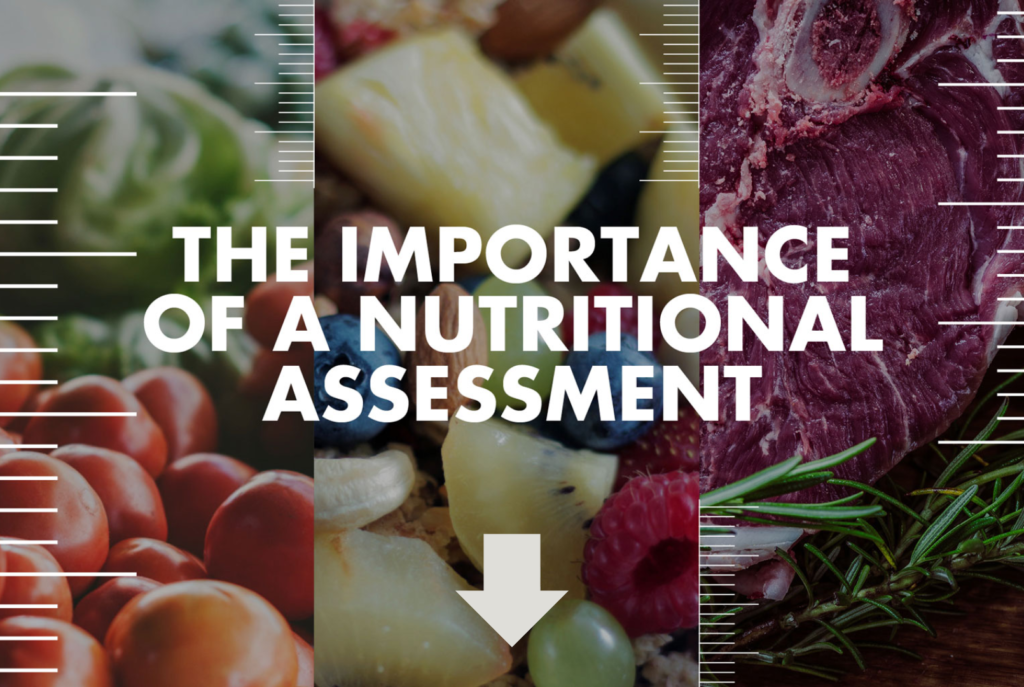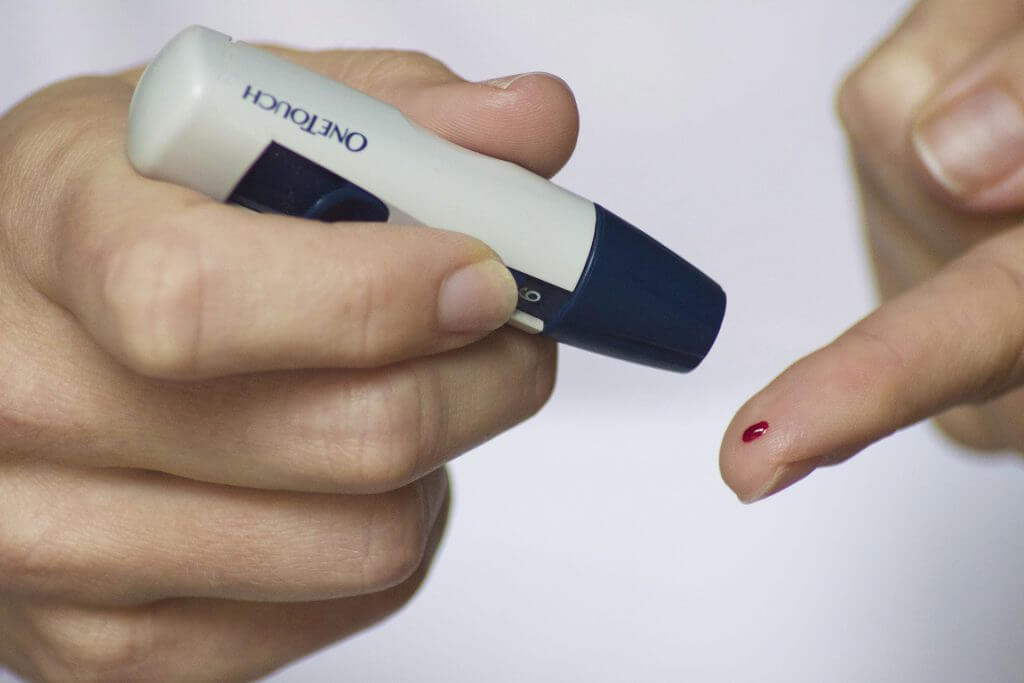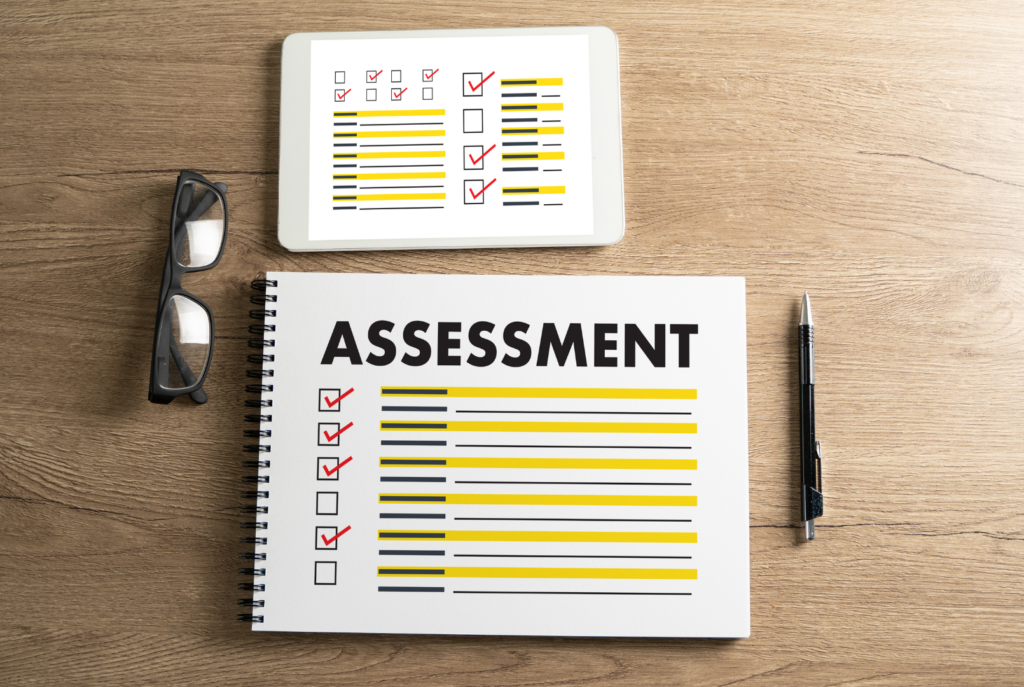Table of Contents

Introduction
Nutrition is the study of how food influences the body’s health and growth. It looks at the biochemical and physiological mechanisms by which living things use nutrients from food to stay alive and keep their bodies working. It includes getting the right amounts of carbs, proteins, fats, vitamins, and minerals, which are all important for making energy, growing, and staying healthy.
A nutritional evaluation is a methodical way to find out how healthy a person’s diet is and what they need to eat. It entails gathering and analyzing diverse data to pinpoint possible nutrition-related health concerns.
The British Dietetic Association defines nutritional evaluation as a thorough way to figure out what nutrition-related health problems are and what causes them. Healthcare professionals can do this, or you can do it yourself with tools you can find online.
What is the state of your nutrition?
Nutritional status is the state of a person’s health, which is based on what they eat and how well their body can use those nutrients. It shows if a person’s diet is balanced and if their body is getting the right nutrients to work well. Age, sex, heredity, physical activity, and the existence of chronic diseases are just a few of the things that might affect a person’s nutritional health.
Healthcare experts do nutritional assessments to find out how well someone is eating, which is important for finding out if they are missing or getting too much of anything in their diet. There are also online self-assessment tools that anyone can use to keep track of their own nutritional status.
Goals of Nutritional Assessment
The main goals of nutritional assessment are:
- Finding Malnutrition or the Risk of Malnutrition: Healthcare providers can find people who are at risk of malnutrition or who are currently suffering from it by looking at their diet and physical health.
- Creating Customized Dietary Suggestions: Nutritional assessments assist make dietary suggestions that are specific to each person’s needs, making sure they get the right nutrients.
- Keeping an eye on nutritional status over time: Regular evaluations let you see how your nutritional status changes over time, which helps you see patterns and make any dietary modifications that are needed.
- Helping doctors make decisions: Nutritional assessments give healthcare clinicians important information that helps them make smart choices about a patient’s treatment plan, especially for people with long-term illnesses.
Why Nutritional Assessment is Important

There are many reasons why nutritional evaluation is important:
Preventing Health Problems: Regular nutritional assessments can help find health problems early that are linked to inadequate nutrition, which makes it possible to act quickly.
Managing Chronic Diseases: Nutritional assessment is very important for those with chronic disorders like diabetes, heart disease, or obesity since it helps them stay healthy and avoid problems.
Understanding one’s nutritional status helps them eat a balanced diet, which is necessary for being healthy and full of energy.
Certain groups, such youngsters, the elderly, pregnant women, and people with long-term illnesses, are more likely to have nutritional deficiencies and need regular checkups.
Parts of a Nutritional Assessment
The ABCD techniques are the four key parts of a nutritional assessment.
Anthropometric Measurements
Anthropometric measurements are ways to check the body without hurting it to find out about body composition and growth patterns.
These measurements consist of:
Height and weight are basic signs of growth and development.
Body Mass Index (BMI): A common way to figure out how much body fat you have based on your height and weight.
Waist circumference: This helps you figure out how much fat is in your stomach, which is connected to a higher risk of long-term problems.
These measurements are very significant for figuring out how well children are eating since they show how their growth is going and what nutrients they might be missing.

Measuring BMI, waist circumference, height, and weight
How to Measure Height
- Stand Straight: The person should be barefoot and have their back against a wall or a height-measuring stadiometer.
- Position: Make sure that the heels, buttocks, shoulders, and head are all touching the wall. The chin should be level, and the eyes should be looking straight ahead.
- Measure: Use a stadiometer or a flat ruler to measure from the floor to the top of the head. Write down the measurement in centimeters (cm) or meters (m).
Weight Measurement
- Get the scale ready: Use a digital or mechanical scale that has been calibrated. Put it on a level, hard surface.
- Weighing: The person needs to take off any heavy clothes, shoes, or accessories. They should stay stationary in the middle of the scale.
- Record: Measure in kilograms (kg).

Calculating Body Mass Index (BMI)
To figure out your BMI, use the formula:
BMI = Weight (kg) / (Height (m) x Height (m)) or BMI = Weight (Kg) / Height (m2)
Steps:
- Find out how much the person weighs in kilograms.
- Find out how tall the person is in meters.
- Use the BMI formula.
- Look at the BMI reference chart for Asians to see how the outcome compares.
Table of BMI for Asians
The following table displays the BMI categorization requirements for Asians. These standards are a little different from global standards because Asians have different body types and health risks.
| BMI (kg/m²) | Classification |
| < 18.5 | Underweight |
| 18.5 – 22.9 | Normal Weight |
| 23.0 – 24.9 | Overweight |
| 25.0 – 29.9 | Obese Class I |
| ≥ 30.0 | Obese Class II (Severe) |
Measurement of Waist Circumference
- Positioning: The person should stand up straight and breathe normally. The measurement should be taken at the narrowest point between the lower rib and the iliac crest, which is normally immediately above the belly button.
- Measurement: Use a measuring tape that doesn’t stretch. Make sure it’s horizontal and snug, but not too tight, then wrap it around your waist.
- Record: Use centimeters (cm) to measure the circumference.
Reference Values for Waist Circumference
The following table displays the waist circumference measurement levels that put Asians at higher risk for health problems:
| Gender | Increased Risk | High Risk |
| Men | ≥ 90 cm (35 inches) | ≥ 100 cm (39 inches) |
| Women | ≥ 80 cm (31 inches) | ≥ 90 cm (35 inches) |
These measurements and reference values are crucial for assessing an individual’s risk of acquiring obesity-related health issues, particularly in populations with heightened sensitivity, such as Asians.
Biochemical Evaluation
Biochemical or laboratory assessment methods look at a nutrient or its metabolites in bodily fluids like blood, urine, feces, or other tissues that are related to the nutrient.
Taking blood samples to check blood glucose levels is one way to tell if someone has diabetes.

These tests can provide you a lot of information about:
- Nutrient Deficiencies: Not having enough vitamins or minerals in your diet.
- Nutrient Excesses: Indicating overconsumption of certain nutrients, which can lead to health issues.Too many nutrients: This means eating too much of some nutrients, which might cause health problems.
- Metabolic Functions: Checking how well the body breaks down nutrients, which is important for controlling long-term diseases like diabetes.
These tests are important for finding health problems that may not show up on a physical exam.
Clinical Evaluation
Clinical assessment methods focus on finding indications and symptoms that could mean a person is lacking certain nutrients.
This includes looking at different parts of the body, such as the skin, eyes, tongue, ears, mouth, hair, nails, and gums.
These strategies include examining for indicators of insufficiency that can be seen on these locations or asking patients about symptoms that might mean they are lacking important nutrients.

Clinical examinations are frequently integrated with patient interviews to obtain further information regarding symptoms potentially associated with inadequate nutrition.
Some important things are:
- Skin and Hair Problems: If your skin is dry or your hair is falling out, it could be a sign that you don’t have enough nutrients.
- Oral Health: Swollen gums or cracked lips could mean that you don’t get enough of certain vitamins or minerals.
- Physical Signs: Fatigue, weakness, or weight loss for no reason could be signs of malnutrition.
Checking Your Diet
Dietary evaluation methods entail evaluating an individual’s or group’s history or current nutrient intake from food to estimate their nutritional status.
There are many ways to check someone’s nutritional health, such as the 24-Hour Recall, Food Frequency Questionnaire, Food Diary, Observed Food Consumption, Family Medical History, and Lifestyle Assessment.

You can do this by:
- Food Frequency Questionnaires (FFQs): These ask how often certain foods are eaten over a certain time period.
- 24-Hour Dietary Recalls: A way to get a quick look at everything someone has eaten in the last day.
- Food diaries are where people write down what they eat every day. This helps them see patterns and find ways to improve.
Dietary evaluations are very important for figuring out how much of each nutrient a person is getting and finding any gaps in their diet that need to be filled.

What is Nutrition Screening?

Nutrition screening is a first step in finding people who are at risk of malnutrition or other health problems connected to nutrition. It is usually a quick and easy process that nurses, nutritionists, and other health care professionals may do.
Questions about recent weight loss, changes in appetite, or trouble eating are common in nutrition screening tools. The results assist decide if a more in-depth nutritional evaluation is necessary.
Putting Clients First for Nutritional Assessment
Because of the lack of resources in the healthcare system, it is not possible to check the nutritional status of every person. Because of this, healthcare providers provide priority to particular groups, such as:
- Older people are more likely to be malnourished because they may not eat as much or have long-term ailments.
- Kids, especially those who are too thin, too heavy, or worried about their progress.
- Pregnant women have higher dietary needs and need to be watched to make sure they and their unborn kid are healthy.
- Patients with chronic diseases like diabetes, heart disease, or cancer, where diet is very important for controlling the disease.
- People Who Have Recently Lost Weight: If you lose weight without meaning to, it could be a symptom of health or dietary concerns.
- Putting these groups first makes sure that the people who are most at risk get the help and attention they need to improve their nutrition.
How often nutritional assessments are done
Depending on a person’s demands and health, nutritional assessments may happen more or less often. But here are some general rules:
- Routine Assessments: For people who are healthy, an annual nutritional assessment during a regular health check-up is usually enough.
- Managing Chronic Diseases: People with chronic conditions may need to be checked more often, usually every three or six months, depending on how bad their condition is.
- High-Risk Groups: People who are at high risk, such the elderly or pregnant women, may have their nutritional status checked every few months to keep a careful eye on it.
- After being discharged from the hospital, patients who are recovering from surgery or illness may need a nutritional assessment to make sure they are recovering well and to avoid malnutrition.
Regular assessments are important for finding possible nutritional deficiencies early and implementing changes to the diet on time to promote general health.
Conclusion
Nutritional evaluation is an important part of healthcare since it gives doctors important information about a person’s nutritional state and helps them find possible health concerns that come with bad nutrition. Healthcare professionals can make tailored and complete nutrition recommendations by using anthropometric measurements, biochemical tests, clinical evaluations, and dietary assessments.
Nutritional assessment is very important, especially for children, the elderly, and people with long-term illnesses. Regular assessments make sure that nutritional demands are addressed, which leads to better health and well-being. Nutrition screening is also a crucial initial step in finding those who are at risk and deciding who should get a more in-depth evaluation.
To sum up, nutritional assessment is an important process that helps people make smart choices in both their daily lives and in the clinic. Whether done by a doctor or by self-assessment tools, knowing your nutritional status is important for getting and staying healthy.

FAQ
1. What is nutritional assessment?
A. Nutritional assessment is a systematic process used to evaluate an individual’s nutritional status by collecting and interpreting various data, including dietary intake, physical measurements, and biochemical tests.
- 2. Why is nutritional assessment important?
A. Nutritional assessment is crucial for identifying malnutrition, developing personalized dietary recommendations, and monitoring health over time, especially for vulnerable populations. - 3. What are the main components of nutritional assessment?
A. The main components include anthropometric measurements, biochemical assessments, clinical assessments, and dietary assessments. - 4. Who should undergo nutritional assessment?
A. High-risk individuals such as the elderly, children, pregnant women, and those with chronic illnesses should undergo regular nutritional assessments. - 5. What is anthropometric measurement in nutritional assessment?
A. Anthropometric measurement involves evaluating body size, weight, and composition through metrics like BMI, height, and waist circumference. - 6. How does biochemical assessment contribute to nutritional assessment?
A. Biochemical assessment involves lab tests that measure nutrient levels in blood, urine, or stool to detect deficiencies or excesses. - 7. What is the difference between nutritional screening and nutritional assessment?
A. Nutritional screening is a quick process to identify individuals at risk of malnutrition, while nutritional assessment is a detailed evaluation of nutritional status. - 8. How often should nutritional assessments be conducted?
A. Frequency varies, but generally, healthy individuals should be assessed annually, while high-risk groups may require more frequent assessments. - 9. Can nutritional assessments be done online?
A. Yes, there are self-assessment tools available online that can provide a basic evaluation of nutritional status, though they should not replace professional assessments. - 10. What role does dietary assessment play in nutritional assessment?
A. Dietary assessment involves analyzing an individual’s food and beverage intake to identify nutrient consumption patterns and potential deficiencies. - 11. Can nutritional assessment help in preventing chronic diseases?
A. Yes. Nutritional assessment helps identify and correct nutrient imbalances, which can prevent the onset of chronic diseases such as diabetes, heart disease, and hypertension by promoting healthier dietary habits. - 12. Is BMI the only indicator used in nutritional assessment?
A. No. While BMI is a common metric, nutritional assessment also includes other indicators such as waist circumference, body composition, biochemical tests, and dietary intake to provide a more comprehensive view of nutritional status. - 13. Should pregnant women undergo regular nutritional assessments?
A. Yes. Regular nutritional assessments during pregnancy are essential to ensure that both the mother and the developing fetus receive adequate nutrients, helping to prevent complications such as gestational diabetes or fetal growth issues. - 14. Can online self-assessment tools fully replace professional nutritional assessments?
A. No. Online tools can offer a basic evaluation of nutritional status, but they lack the depth and accuracy of professional assessments, which include physical examinations, lab tests, and personalized dietary recommendations. - 15. Is nutritional screening a comprehensive assessment?
A. No. Nutritional screening is a quick, preliminary process to identify those at risk of malnutrition, whereas a comprehensive nutritional assessment involves a detailed evaluation of dietary habits, physical measurements, and clinical indicators. - 16. Can children benefit from regular nutritional assessments?
A. Yes. Regular nutritional assessments help monitor a child’s growth and development, ensuring they receive the proper nutrients to support healthy physical and cognitive development, and identifying any early signs of malnutrition. - 17. Do nutritional assessments require blood tests?
A. Yes. Biochemical assessments, a key component of nutritional assessment, often require blood tests to measure nutrient levels and identify deficiencies or excesses, providing critical information that cannot be obtained through physical examination alone. - 18. Is weight loss always a sign of poor nutritional status?
A. No. Weight loss can be intentional and healthy, especially in the context of weight management programs. However, unintended weight loss may indicate malnutrition or underlying health issues, making it important to assess the context.

🎯 10+ years of Experience
🎓 10k+ Trained ( 📍 Jaipur )
💪 Helping change people’s lives
🌿 Most trusted lifestyle counselor